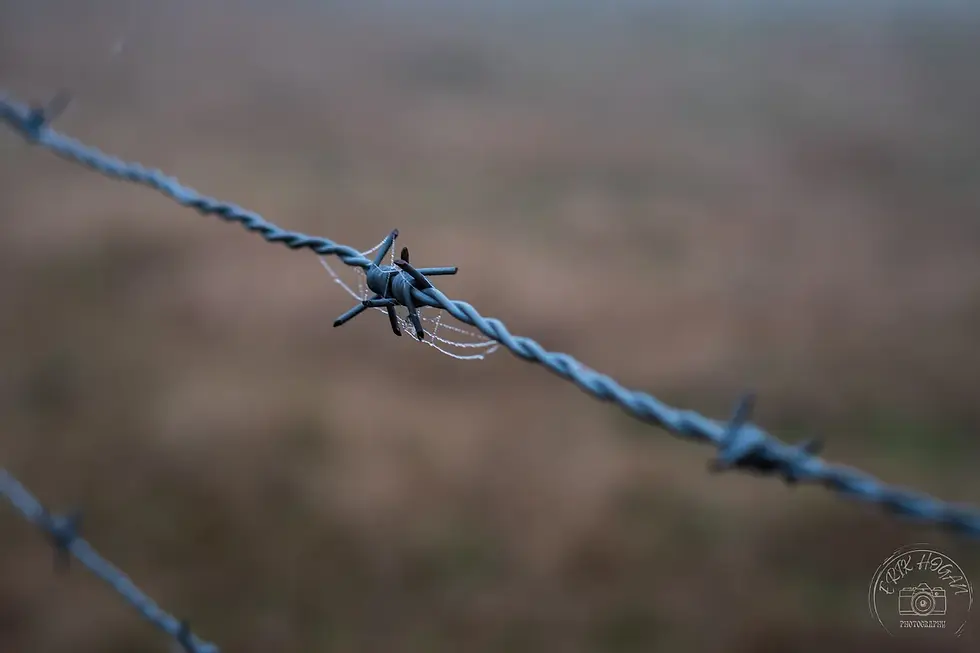Field Notes: Reflections on Life in Opacity.
- Classic City News

- Dec 10, 2023
- 4 min read

By Erik Hogan
I was out and about in the world the other day and experienced very dense fog throughout the morning. This is highly unusual for my location. I took many photos of the conditions, but the weather also prompted more abstract thoughts.
My academic knowledge of philosophy is limited. I prefer to embrace a simple doctrine and explore the mysteries of existence with whatever rough and unrefined wisdom I have gained by living life. All of this is to say that on this day I pondered the uncertainties of our world, as highlighted by the obscurity of the fog. I found some answers, but maybe even more questions than when I began. Perhaps these words and images will prompt your own explorations.
Let's go!
Blue hour finds me at the beaver pond, stretching silently into the thin fog. The heron that hunted here yesterday is gone. The beavers, architects of the bog, are in hiding. Stillness hangs in the saturated air, dampening my bones with loneliness.
It is early December and a heavy fog has draped itself across the land. Unseasonal warmth settled in after a night of rain. In this dim morning gentle clouds caress the contours of the earth as she sleeps.

Familiar places echo with a hollow emptiness. It is as if the fog has hidden truths of existence long taken for granted. I stand in open fields where the mist and the expanse chill my skin. Exhaled breaths rise and merge with the enveloping fog.
Suggestions of trees border the sodden tracts, their existence an unfinished sentence. They are misheard whispers about a world hidden from understanding.

Amongst the spent rows of harvested corn the trees seem to watch my actions. Their gaze is haunting, like ancestors watching from behind the gossamer veil of time.
Where does one go and what does one do when the path, and the destination, are obscure? How does one follow the trajectory for a life well lived when the course is vague and ill defined?

Forms in the fog silently cry out for discovery. Beauty and truth lie just beyond the limits of sight, but their alluring obscurity has an elegance of its own. They are a siren’s call to the pursuit of artistic revelation, promising answers to esoteric mysteries. Do these treasures even exist? Such is life in the fog.

In a recent podcast Arthur C. Brooksdiscussed the complicated vs the complex. The complicated can be solved. It may take work and understanding, but a solution can be found. On the other hand, the complex state is one in which there are no steps to follow to find the answers. Intricate maps may lead nowhere, yet jewels can be hidden in the gravel underfoot. Success may be visible in the distant fog but the only way to achieve it is to live it, navigating all of the uncertainties along the way.

These ideas align with the complex systems described by author Nassim Taleb in his book series Incerto. Ecosystems and the human body are complex systems. The interactions and balances within them are incomprehensible. Picture a butterfly, startled away from a flower on a sunny summer afternoon, whose frantic wings cause a hurricane on the far side of the earth.

How is it possible to travel through life under such opacity? First, look for the old. Trust in ancient wisdom. Its survival through the ages is proof of its efficacy, regardless of what our dismissive rationality may scream. These are complex truths. They lie beyond the cell phone screen, in dusty books on forgotten shelves, in the traditions of generations past, and in Grandmother’s recipes.

When the path is dark and hard to follow hazards abound. Unseen dangers escape prediction. The recourse is to make oneself unharmed by their arrival. Unemployment is more easily managed by someone with no debts. Pandemics are less frightening to one with optimal health. Some pitfalls can be avoided with obvious choices. Don’t do meth. Do not sprint towards a cliff in the fog, betting on the chances of a soft landing.
As the Stoics encourage, we should focus on what is in our control. This is limited to our own thoughts and desires, not anything in the external world. However, in controlling our thoughts and choosing our inner response to inevitable misfortune, we become unconquerable.

How, then, is success to be found? The answer may be by way of many small trials and many small errors. Great works are not created by extensive research, followed by the production of a masterpiece. They take practice and repeated exercises of discipline. This applies to art, music, literature, athletics, and almost any other endeavor. Early efforts will likely fail. This is good when the repercussions of failure are inconsequential. Failures become a map, showing where not to go.
The distant forms in the fog still call out for discovery. Every small effort, every creation, every attempt holds the chance of an unprecedented success or magnificent discovery. The more we try the more we know and with wisdom we can find the way forward.

stand looking at a fog that hides the world from view, but what I see is not the absence of clarity. Rather, I see a blank slate filled with possibility. It is a world of opportunity to find hidden beauty through the simple act of living.

Erik Hogan is a photographer who primarily shoots landscape, wilderness, and nature scenes in the Athens area.
Follow on Instagram @erikhoganphotography Erik's sketchbook includes a look behind the scenes, with an option to purchase a limited number of prints through the link in his bio. htttps://erikhoganphotography.com.
Subscribe to his Field Notes at








Comments